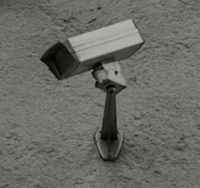Book chronicles life and work of Allen Cole
New exhibit centers black life in mid-20th century Cleveland

The life and work of Allen E. Cole are captured in a new book by Samuel W. Black and Regennia N. Williams, published by Kent State University Press.
Leaf through the pages of the excellent retrospective of the work of the life and work renowned Cleveland photographer Allen E. Cole and you will see images of many famous African Americans, especially from the 1930s and 1940s.
Some photographs include national black leaders like W. E. B. DuBois and James Weldon Johnson [1929], and Mary McLeod Bethune and Mary Church Terrell [1935] who appear in group photographs taken at national meetings in Cleveland.
A sizable number of images are drawn from the pantheon of local black heroes and celebrities: Olympian Jesse Owens; Alonzo Wright, an early entrepreneur whose chain of gasoline service stations made him a millionaire; Call & Post publisher W. O. Walker; Jane Edna Hunter, founder of The Phillis Wheatley Association; Jesse Owens, Garrett Morgan, and dozens of others who will be known to students of Cleveland’s black political and civic history.
But far and away the most vital and illuminating images are those of the ordinary strivers and strainers who comprised the bulk of the teeming masses of black people, part of the Great Migration, who arrived in Cleveland from Alabama and Georgia and Mississippi and West Virginia as the city’s black population exploded. By and large confined to just three or four eastside neighborhoods, they nonetheless constructed a society, one ritual of which was to dress up in their Sunday finest to sit or stand in formal pose for Cole’s camera.
Last night's opening reception for an exhibit of some of Cole's work was a perfect platform to revisit a book on Cole published a decade ago.
Through the Lens of Allen E. Cole is much more than its subtitle — A Photographic History of African Americans in Cleveland, Ohio — suggests. It is, to be sure, what it says it is, but it is also a meticulously researched and beautifully rendered account of the life of a remarkable man who documented the expanse of Cleveland’s black population from a few thousand to hundreds of thousands, principally between 1922 and 1950, after which his pace began to slow.
The authors — archivist Samuel W. Black, who spent ten years at the Western Reserve Historical Society before becoming curator of African American Collections at the Heinz History Center in Pittsburgh, and historian Regennia Williams, presently a Distinguished Scholar at the Cleveland History Center, go behind the artist’s camera to give us a multidimensional sense of Cole. In so doing, they round out significant portions of Negro/black life in Cleveland in perhaps its most dynamic and vibrant years.
Black underscored the importance of Cole's work in remarks delivered last night at the opening reception for a modest exhibit of some of Cole’s photographs and artifacts, part of the extensive collection of his work held by the Western Reserve Historical Society, also known as the Cleveland History Center.
Black spoke to Cole's ability to capture the community of which he made himself such a conscious part. Cole, Black noted, was not only a devoted family man and devout churchgoer; he was also a closet activist — an ally and confidant of Future Outlook League leader John Holly.
Born in West Virginia, Cole moved to Cleveland from Cincinnati, and fully immersed himself in Cleveland's burgeoning black community and made it his own. Ambitious and talented, the hard-working talent parlayed his energy and clever marketing — his slogan, "Somebody, Somewhere, wants your picture", became ubiquitous all over east side enclaves — Cole was soon capturing images of weddings, graduations, and even funerals. He thus became privy to black Cleveland's highs and lows.
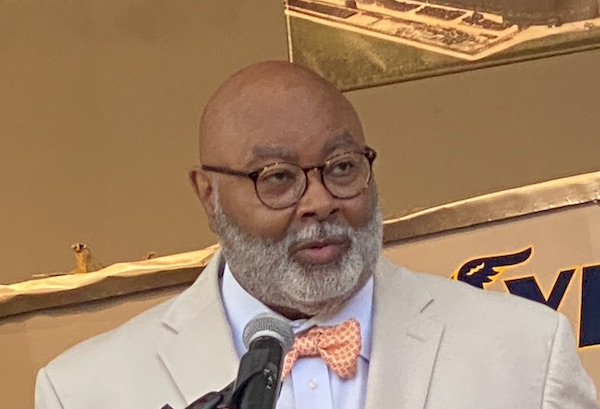
Samuel W. Black, an Allen Cole scholar, speaking at the opening reception for a new exhibit of the photographer's work
Cole's work captured and displayed his neighbors in their dignity. This was extremely important at the time. As Black astutely noted in his remarks, Cole was subliminally telling us that "black people make their own way".
The exhibit’s opening reception was as tasteful as Cole’s work. The price of admission included a copy of the book, a $10 contribution to the Greater Cleveland Association of Black Journalists in support of underwriting efforts to prepare for the 2025 NABJ conference scheduled for Cleveland in 2025. Attendees also got to enjoy the marvelous sounds of Gabriel’s Angels.
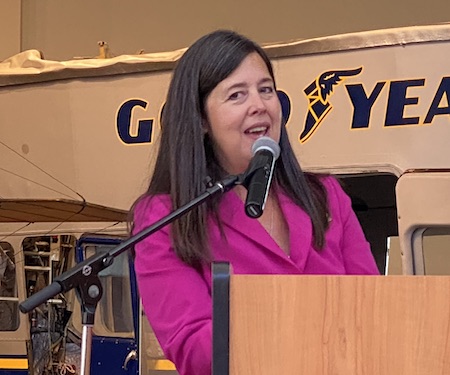
Western Reserve Historical Society president and CEO Kelly Falcone-Hall welcomes attendees at last night's exhibit opening.
The event, dubbed Cleveland Blacks in Photojournalism, included a talk by co-author Black and recognition of several photographers in varied media, including Eric Benson, Rodney Brown, Natasha Herbert, Frederick Johnson, Amanda King, Mychal Lilly, Charles J. Pinkney, and Emanuel Wallace, and videographer Gregory Lockhart.
The exhibit runs through April 1, 2023, after which it will tour various sites in Ohio.

Attendees at the opening exhibit reception got their money's worth, including an interesting talk with vignettes on the life and times of Allen Cole, heavy hors d'oeuvres, big band sounds ,and a copy of a splendid new book on Cole and his work.
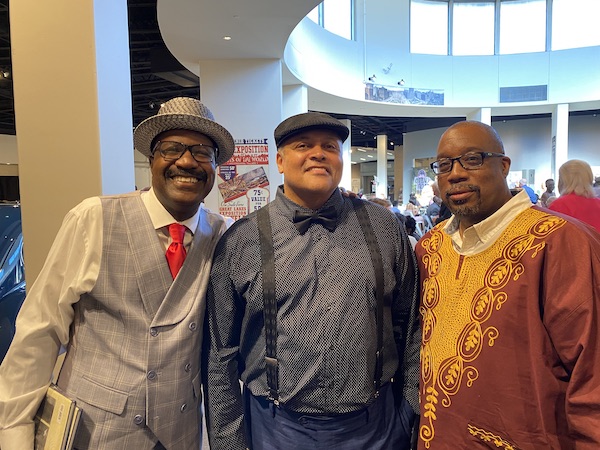
Dapper gents: Cleveland councilman Kevin Conwell, graphic artist Wayne Dailey, and Kevin "Chill" Heard, president of the Greater Cleveland Association of Black Journalists

Jean Hogan and masked musician Lavert Stuart reconnect at the mini-Allen Cole retrospective now on display at the Cleveland History Center. Hogan and Stuart were turn-of-the century colleagues at Phillis Wheatley Association's now-defunct Sutphen School of Music.
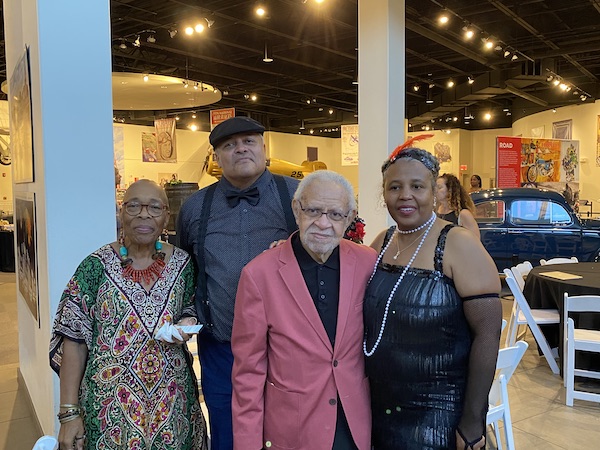
Cleveland archivist Rita Knight Gray, Wayne Dailey, Dick Peery, the dean of Cleveland black journalists, and journalist-novelist-entrepreneur Rhonda Crowder
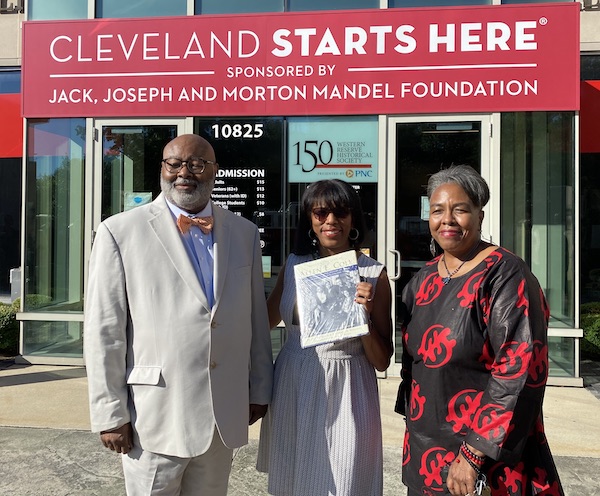
Connie Hill-Johnson, chair of The Cleveland Foundation, holding a first edition of Through the Lens of Allen E. Cole, is flanked by co-authors Samuel W. Black, left, and Regennia N. Williams, outside the Cleveland History Center before the start of last night's reception.
• • •• • •
All photos by R. T. Andrews/The Real Deal Press LLC
This article was updated to clarify the original publication date of the Cole book as 2012 and the current affiliation of co-author Regennia Williams.









